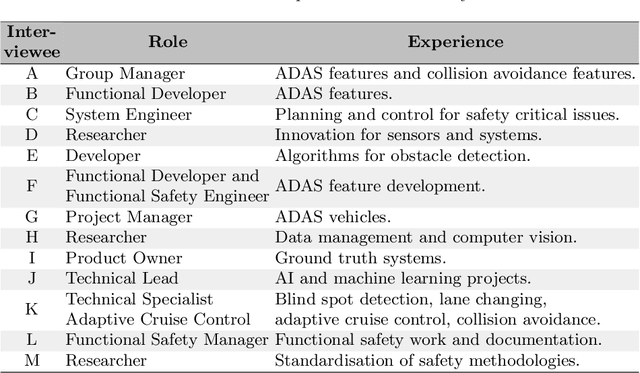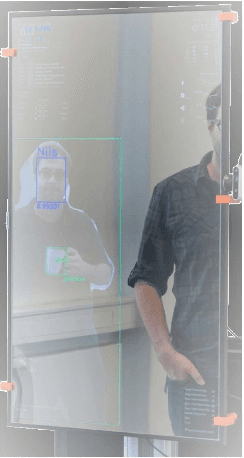Jennifer Linder
Setting AI in context: A case study on defining the context and operational design domain for automated driving
Jan 27, 2022



Abstract:[Context and motivation] For automated driving systems, the operational context needs to be known in order to state guarantees on performance and safety. The operational design domain (ODD) is an abstraction of the operational context, and its definition is an integral part of the system development process. [Question / problem] There are still major uncertainties in how to clearly define and document the operational context in a diverse and distributed development environment such as the automotive industry. This case study investigates the challenges with context definitions for the development of perception functions that use machine learning for automated driving. [Principal ideas/results] Based on qualitative analysis of data from semi-structured interviews, the case study shows that there is a lack of standardisation for context definitions across the industry, ambiguities in the processes that lead to deriving the ODD, missing documentation of assumptions about the operational context, and a lack of involvement of function developers in the context definition. [Contribution] The results outline challenges experienced by an automotive supplier company when defining the operational context for systems using machine learning. Furthermore, the study collected ideas for potential solutions from the perspective of practitioners.
Requirement Engineering Challenges for AI-intense Systems Development
Mar 22, 2021



Abstract:Availability of powerful computation and communication technology as well as advances in artificial intelligence enable a new generation of complex, AI-intense systems and applications. Such systems and applications promise exciting improvements on a societal level, yet they also bring with them new challenges for their development. In this paper we argue that significant challenges relate to defining and ensuring behaviour and quality attributes of such systems and applications. We specifically derive four challenge areas from relevant use cases of complex, AI-intense systems and applications related to industry, transportation, and home automation: understanding, determining, and specifying (i) contextual definitions and requirements, (ii) data attributes and requirements, (iii) performance definition and monitoring, and (iv) the impact of human factors on system acceptance and success. Solving these challenges will imply process support that integrates new requirements engineering methods into development approaches for complex, AI-intense systems and applications. We present these challenges in detail and propose a research roadmap.
 Add to Chrome
Add to Chrome Add to Firefox
Add to Firefox Add to Edge
Add to Edge